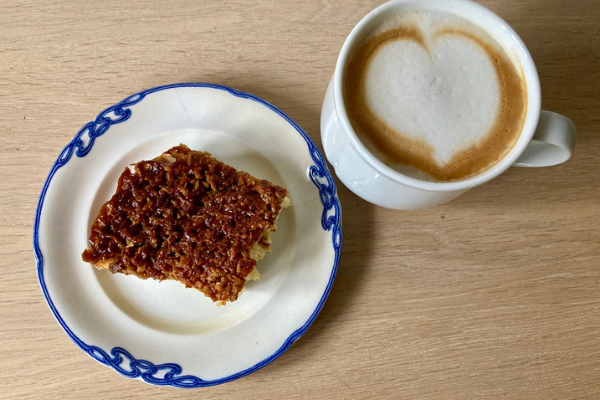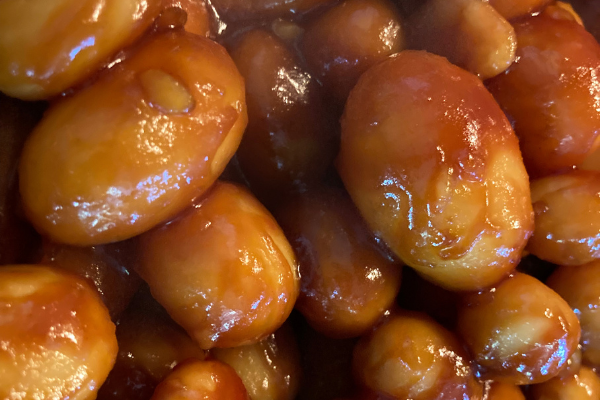This post may contain affiliate links. Please see our disclosure policy.
Kanelsnegle or cinnamon snails are the Danish iterations of the cinnamon bun. There are two main types, bløddejs (soft dough) and wienerbrødsdej (pastry dough). They are filled with a delicious cinnamon filling and topped with a sugar glazing.
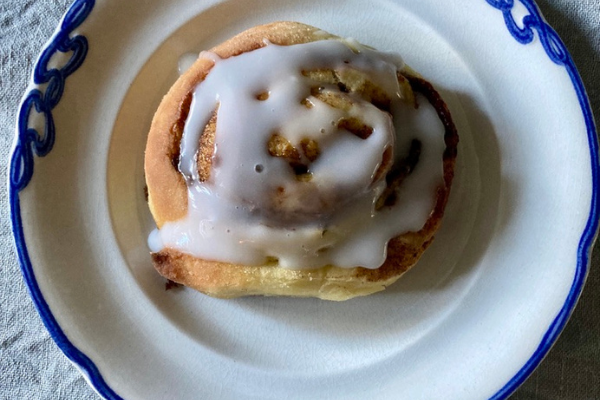
(This post is written by Pia Sonne, a native of Denmark and the writer behind the blog Busy Hands, Quiet Hearts.)
Kanelsnegle are loved by young and old. Both the soft dough and pastry dough versions are treats the Danes enjoy year-round.
When Danes bake kanelsnegle at home, it’s typically with a soft yeast dough. Only the more adventurous home bakers are interested in dealing with making a wienerbrødsdej from scratch.
Kanelsnegle are mainly a coffee treat. Something Danes have mid-morning or mid-afternoon. Occasionally, they’re served as part of a breakfast spread along with other kinds of wienerbrød.
In Northern Jutland, kanelsnegle are referred to as jødekager, jew cakes. It’s not offensive, I promise, you can read about it in this recipe for Danish Jødekager, the Christmas cookie most Danes now associate with the name.
The History and Variations of Kanelsnegle
Kanelsnegle seem to stem from Sweden, where all cinnamon buns have their roots.
In the early 20th century, Sweden became self-sufficient with flour and sugar, which meant these ingredients got cheaper and home bakers everywhere began experimenting more with their baked goods.
Ikea made the Swedish kanelbullar world famous. These soft dough cinnamon snails are so loved in Sweden, that they have a day dedicated to them, October 4th. Just like Lucia boller, which are served on December 13th.
It’s unclear when kanelsnegle made their way to Denmark and the rest of the world.

In 1988, however, a new phenomenon saw the light of day in Denmark.
Onsdagssneglen (the Wednesday Snail), a slightly bigger soft dough snail was made. In the beginning, it was only made on Wednesdays at bakeries. It was made popular in the 90s as it was enjoyed while watching soccer games on TV.
Today, you can buy an onsdagssnegl every day of the week but most bakeries still have them on offer for a lower price on Wednesdays.
Furthermore, some Danes also have an affinity for the so-called direktørsnegl, best translated as the CEO’s snail.
This type of kanelsnegl is often made with a different type of dough, filled with a creme filling as well as the cinnamon filling, and topped with melted chocolate. I, personally, find it way too rich and view it as an entirely different pastry than the more traditional types of kanelsnegle.
Techniques
There are a couple of different ways to fold the dough, depending on your personal preference and if you’re using yeast or pastry dough.
The traditional snail form often leaks out a lot of goodness but is always used for pastry dough.
Inspired by the Swedish kanelbullar, many Danes now experiment with the fanciful turning of the dough to keep as much of the cinnamon filling inside the treat.
The Traditional Snail
Roll out the dough into a rectangle of roughly 16×10 inches (40×25 cm).
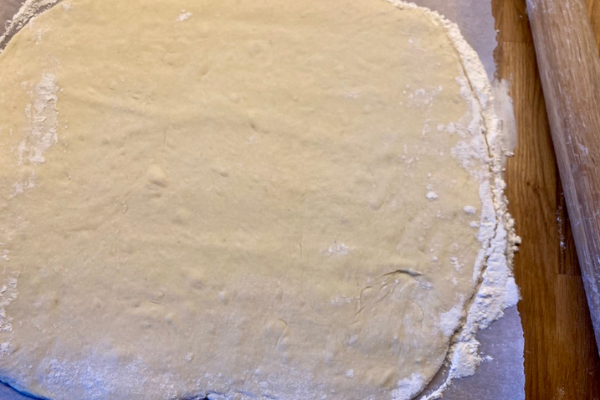
Spread the filling evenly on the dough. Leave about ½ inch (1.5cm) at the top without any filling on it.
Roll up the dough so the clean ½ inch (1.5cm) edge ends up at the top.
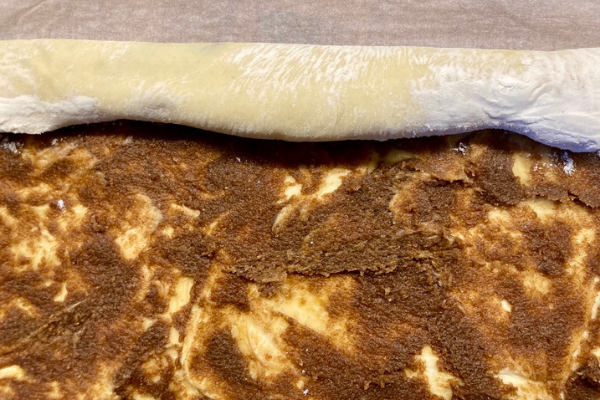
Rolling the dough can be fiddly.
If you roll the dough out on a piece of parchment paper, then you can use it to help roll the dough.
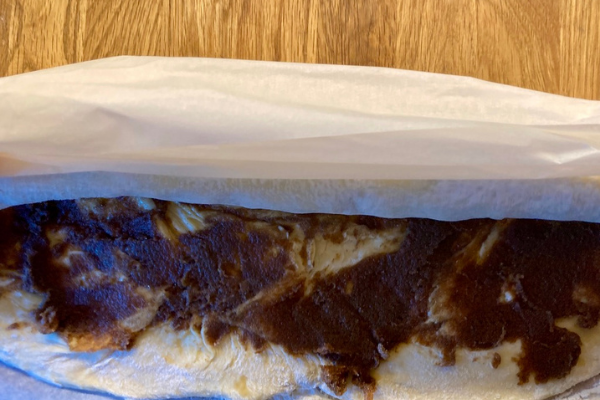
Cut out snails approximately ½ inch (1.5 cm) thick.
Place them in individual paper cups or on parchment paper to be baked.
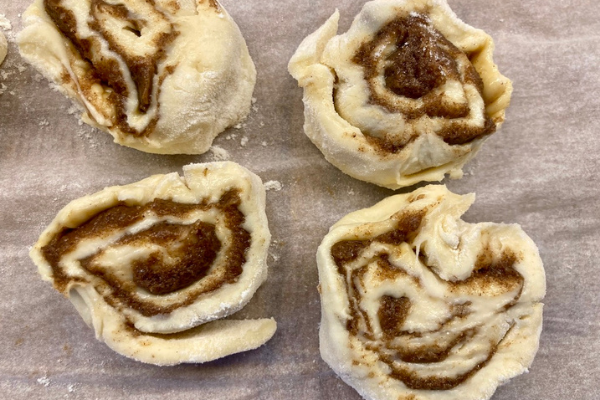
The Folded Snail
This type of kanelsnegl is also called a kanelsnurre.
There are various techniques you can use to form a kanelsnurre. You can pre-twist the dough before folding it but you don’t have to.
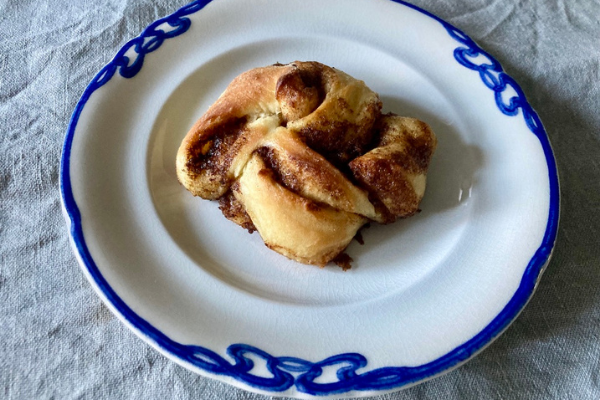
Here’s one of the easier methods:
Roll out the dough into a rectangle of roughly 16×10 inches (40×25 cm). Spread the filling evenly over the entire dough. Fold the top third of the dough over so only one-third is left with the filling exposed.
Then fold the bottom third over so there’s no longer any exposed filling. Cut the dough into ½ inch (1.5 cm) thick strips.
Grab both ends of a strip of dough. Start wrapping the dough around your fingers on one hand. Use your thumb to control the dough by looping the dough around it. Tuck the end under and tuck the bit around your thumb under as well.
It’s difficult to explain with words how to make a kanelsnurre. It will make more sense if you see someone doing it at the same time.
Watch the folding technique for kanelsnurrer here:
Kanelsnegle Ingredients
Butter – Real butter is key as it impacts the taste of finished kanelsnegle. Fresh, salted butter gives the best result.
Milk – Use whole milk, preferably organic. If you can’t get whole milk you can use skimmed milk and replace ¼ cup with cream to get a similar result. The fat content adds to the taste.
Yeast – You can use fresh yeast or dry yeast. The recipe calls for fresh yeast, so if you use dry yeast, please use the equivalent amount noted on the package.
Sugar – Any sugar will do. Kanelsnegle are typically made with white cane sugar. If you prefer a different kind, you can substitute it.
Eggs – Fresh farm eggs are to be preferred. Use the best you can get, and always bake with fresh eggs.
Flour – Use all-purpose or pastry flour. Make sure you aren’t using self-rising flour as you are adding yeast.
Brown sugar – Brown sugar adds flavour as well as colour. You can replace it with white sugar but it won’t give the same complexity in taste.
Maple syrup – Use real maple syrup for the best taste. If you don’t have any maple syrup you can omit it.
Cinnamon – Use the real stuff. Look for Cinnamomum verum or Ceylon cinnamon. Avoid Cassia cinnamon. Freshly ground is best, a freshly opened portion will do if you can’t grind your own.
Marzipan – Use real marzipan for the best result. The only ingredients should be almonds and sugar.
Powdered sugar – To make the glazing you will need powdered sugar. If you can’t find it, you can powder some white sugar by blitzing it in a food processor until it’s a fine powder.
Water – Use the best water you can. Filtered tap water works well. Always use cold water.
How to Make Kanelsnegle
Kanelsnegle are made in three parts: the dough, the filling and the glazing. The dough recipe given here is a traditional Danish kanelsnegle dough.
For a result more like the Swedish kanelbullar, you could use the recipe given in The Nordic Cookbook, which is a wonderful resource for Nordic recipes. You can also add 1 tbsp of cardamom to the dough recipe given here.
Dough
Begin making the dough first by melting the butter and adding the milk to it. Let it come to finger temperature.
Then add the yeast and combine until there are no visible lumps of yeast left.
Mix the eggs together thoroughly and add them along with the sugar to the mixture.
Finally, add the flour and combine the mixture until you have a smooth dough.
Let the dough rise, covered by a moist cloth in a warm spot for 30 min.
While the dough rests you should make the filling.
Filling
Don’t over-mix the filling or it will separate while baking. It’s important that all ingredients are combined but do the least amount of mixing you can to reach that point.
Begin by mixing the marzipan (if you want to use it) with the brown sugar in a bowl until there are no clumps left.
Then add the soft butter and mix again until fully combined.
Finally, add the maple syrup and cinnamon and mix one last time until fully combined.
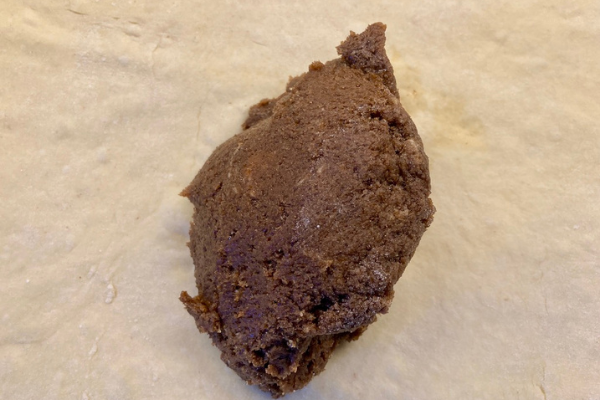
Once the dough is done resting, add the filling and use your preferred shaping method to create kanelsnegle or kanelsnurrer.
Place each kanelsnegl with good spacing on a lined baking tray and let them proof for 10 min.
Bake them in a preheated oven at 400F (200C) for 12 min. or until crisp and golden.
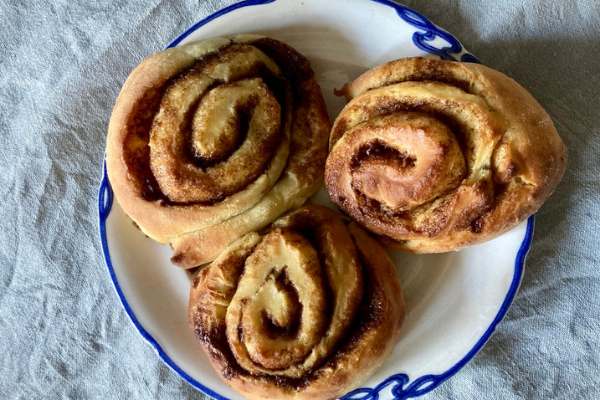
Let the kanelsnegle cool before glazing. You don’t typically glaze kanelsnurrer but you can if you’d like to.
Glazing
To make the glazing, mix powdered sugar with a tiny amount of water. Mix until fully combined.
Add more water or powdered sugar until you have a consistency that is smooth but not too runny.
Glaze the cooled kanelsnegle and let them sit until the glazing stiffens before serving them.
Only glaze as many as you plan to eat. Kanelsnegle store better without the glazing.

As kanelsnegle are made from a yeast dough they go stale quickly. You can freeze both unbaked and unglazed but baked kanelsnegle for several months.
If you freeze unbaked snegle, then defrost and proof them at room temperature for 10 min. before baking them.

Danish Kanelsnegle (Cinnamon Snails)
Ingredients
Dough
- 7 oz 200 g butter
- 2 cups ½ litre milk
- 3.5 oz 100 g yeast
- 3.5 oz 100 g sugar
- 2 eggs
- 28-32 oz 800-900 g flour
Filling
- 1.8 oz 50 g marzipan (optional)
- 4.4 oz 125 g soft butter
- 4.4 oz 125 g brown sugar
- 0.35 oz 10 g cinnamon
- 0.35 oz 10 g maple syrup
Glazing
- Powdered sugar
- Water
Instructions
Dough:
- Melt the butter and add the milk. Let it come to finger temperature.
- Add the yeast and combine.
- Mix the eggs together and add them along with the sugar.
- Add the flour and combine until you have a smooth dough.
- Let the dough rise in a warm spot for 30 min.
- Make the filling.
- Add the filling and use your preferred shaping method to create kanelsnegle or kanelsnurrer.
- Place them on a lined baking tray and let them proof for 10 min.
- Bake in a preheated oven at 400F (200C) for 12 min. or until crisp and golden.
- Let cool before glazing.
Filling:
- If you want to use marzipan, then add it to the brown sugar in a bowl and combine until there are no clumps left.
- Add the soft butter and mix until combined.
- Add the maple syrup and cinnamon.
- Don’t over-mix the filling or it will separate while baking.
Glazing:
- Mix powdered sugar with a tiny amount of water. Mix until combined.
- Add more water or powdered sugar until you have a consistency that is smooth but not too runny.
- Glaze the cooled kanelsnegle. Only glaze as many as you plan to eat.
Notes
Danish Recipes
Looking for other traditional Danish treats to serve with your kanelsnegle? Any of these would be great for a coffee time spread.
- Danish Drømmekage (dream cake)
- Danish Himbærsnitter (Raspberry bars)
- Danish Havregrynskugler (oat treats)
- Danish Klejner (a deep-fried cookie)
- Danish Pebernødder (a Christmas cookie)


